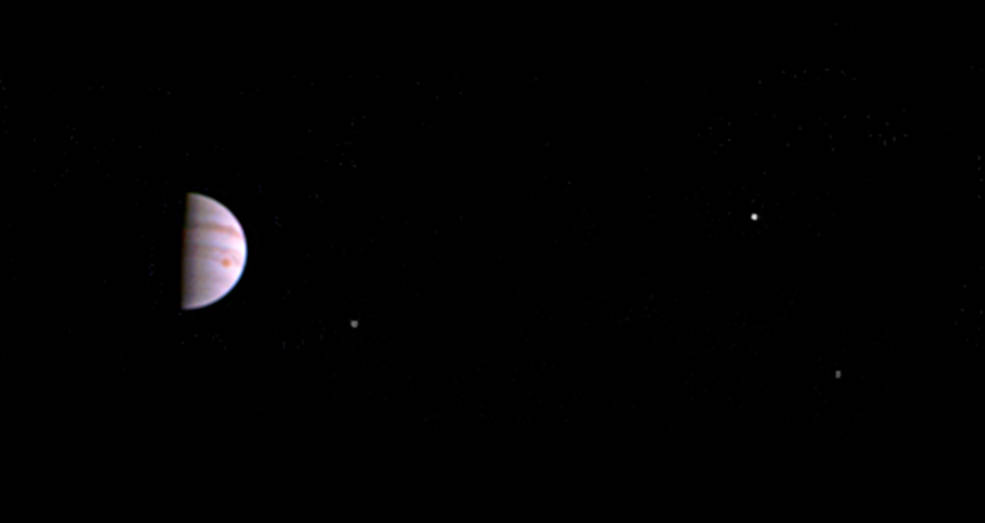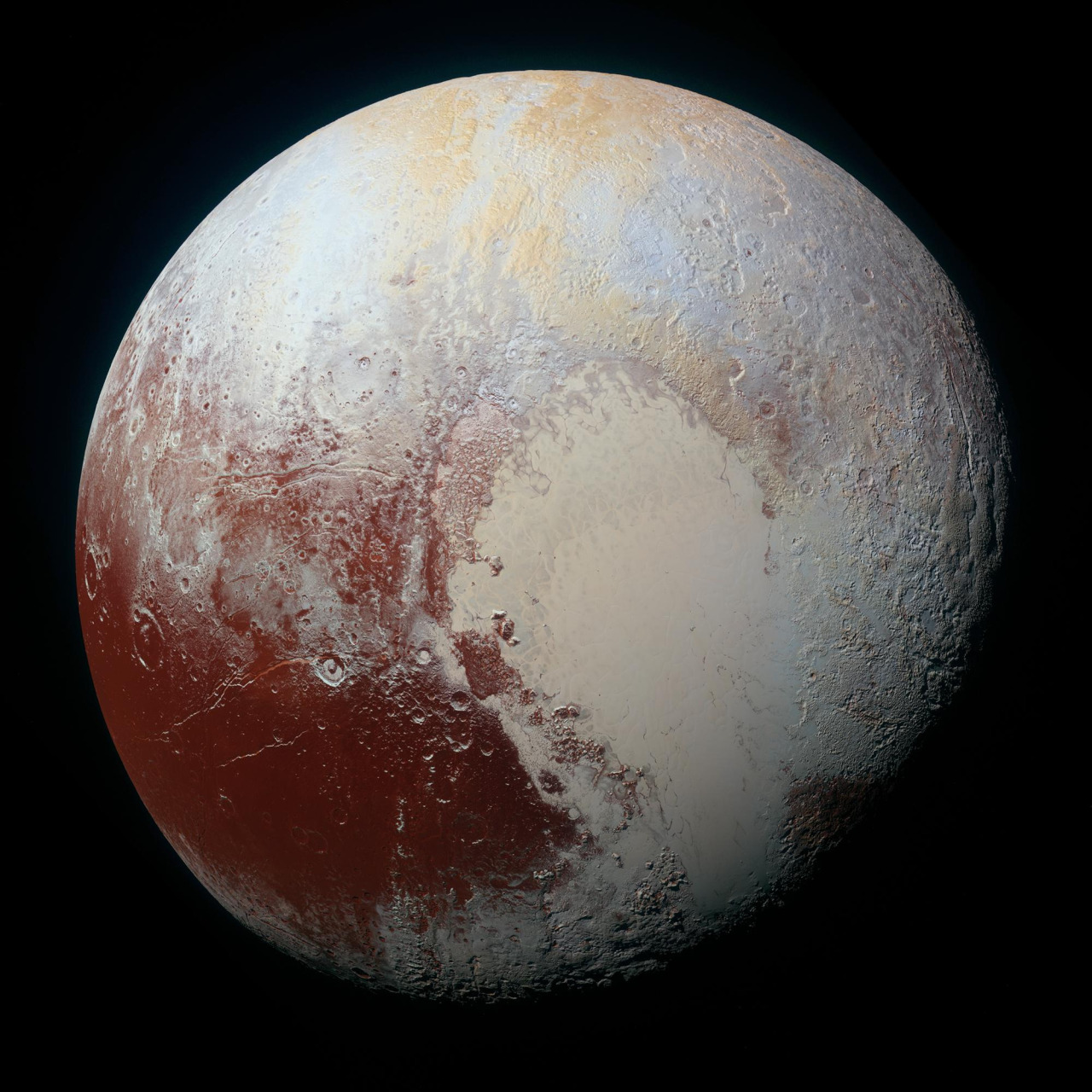 Did I mention NASA’s Juno mission yesterday? Well, it looks like mind-blowing images are already starting to arrive from Jupiter.
Did I mention NASA’s Juno mission yesterday? Well, it looks like mind-blowing images are already starting to arrive from Jupiter.
The camera aboard the Juno spacecraft has sent its first images after its July 4 arrival, NASA announced yesterday. The visible-light camera switched on six days after the craft fired its main engine and propelled itself into orbit around the gas giant.
Pretty impressive, I’d say. Especially considering high-resolution images of Jupiter are still a few weeks away, according to NASA. Those start arriving August 27.
The shot above was taken June 10, when Juno was still 2.7 million miles from Jupiter on the outbound leg of its initial 53.5-day orbit. It shows the Jovian planet’s atmospheric features, including its eye-like Great Red Spot. You can see three of the planet’s four largest moons — Io, Europa and Ganymede, from left to right.
During its mission, Juno will circle Jupiter 37 times, doing flybys of the planet’s cloud tops — as close as about 2,600 miles. Sounds there’s plenty of wonder yet to come.


